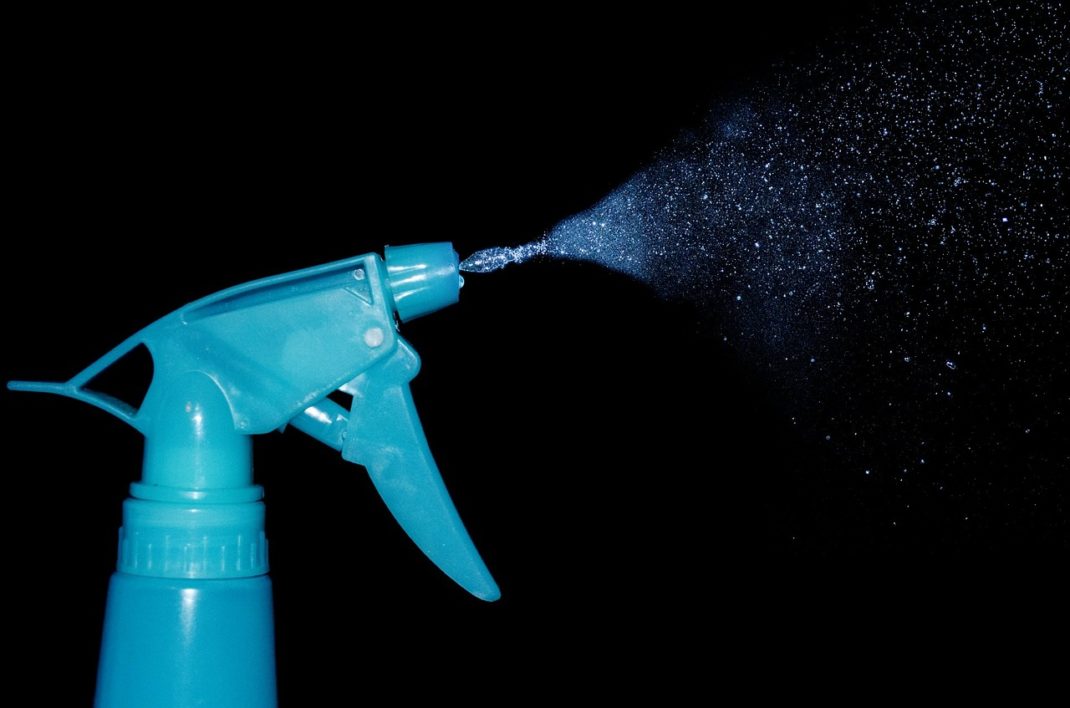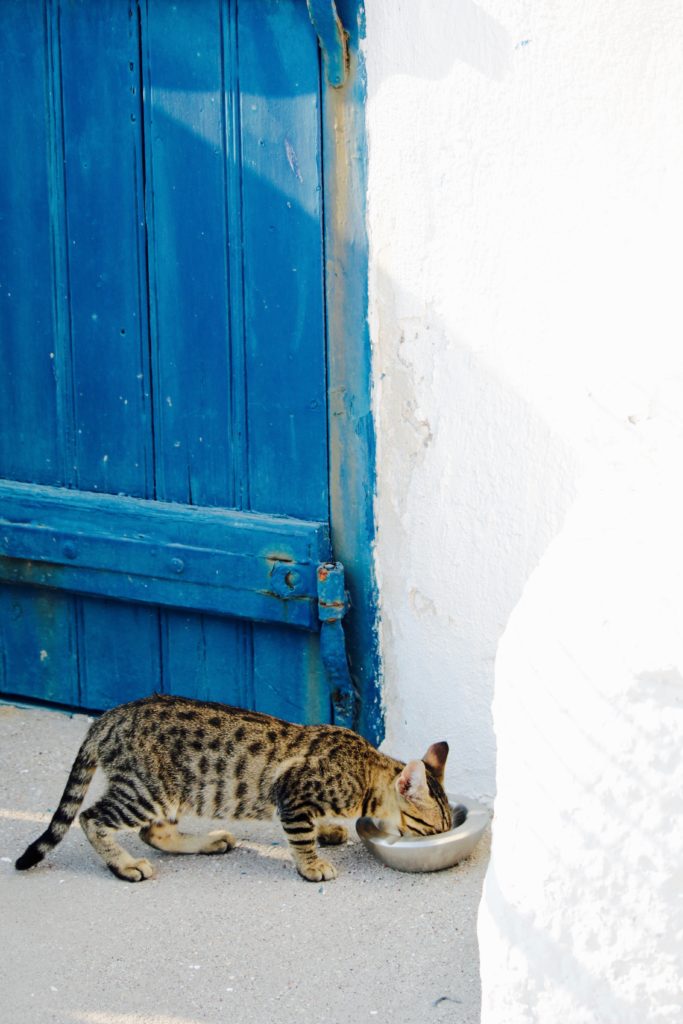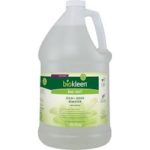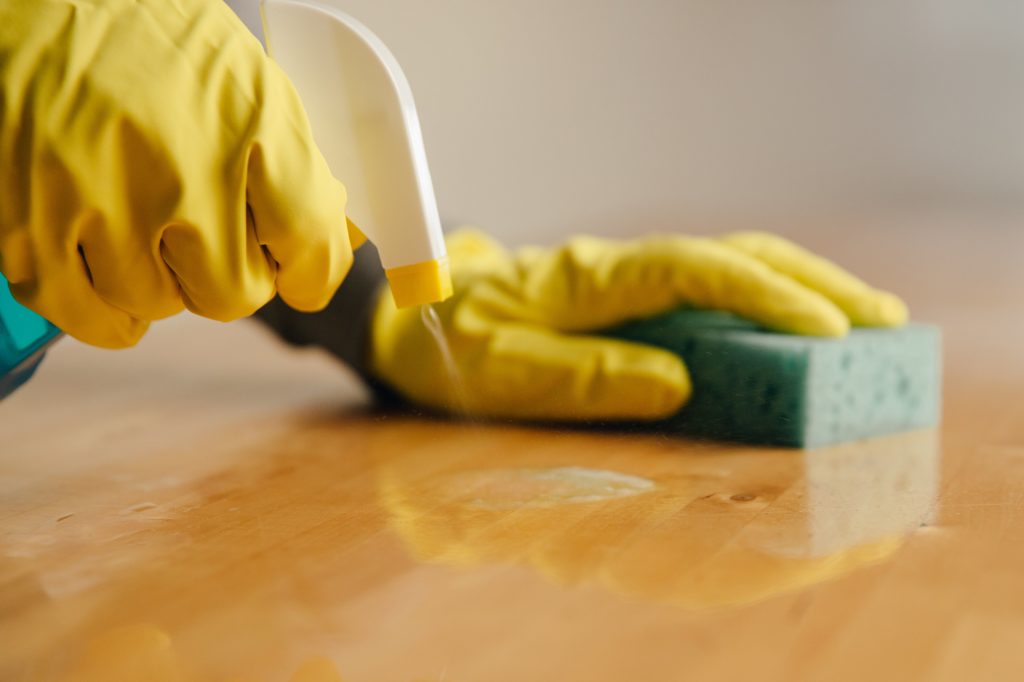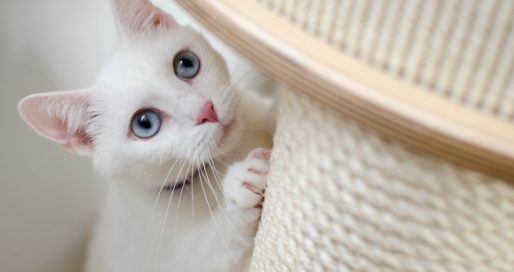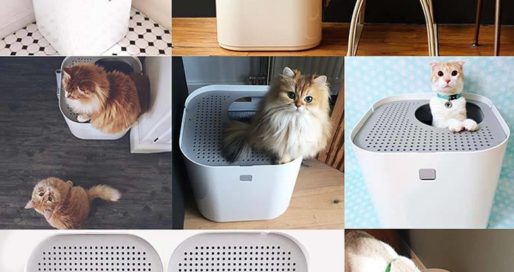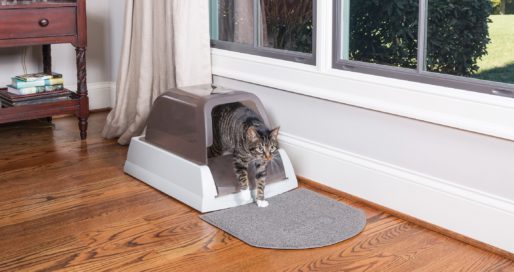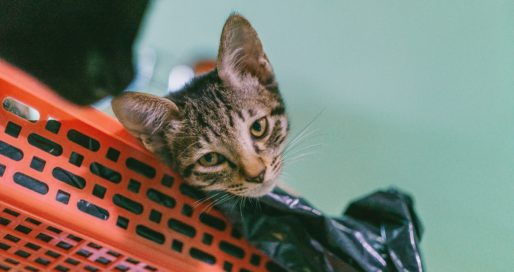Every cat owner dreads the smell of cat pee outside of the litter box. When a cat urinates in a litter box, the litter and any odor-absorbing chemicals in the litter help neutralize the smell. Plus, your cat will bury his waste after he’s done going, masking the odor even more. But when a cat goes outside of the litter box and onto something soft and absorbent, the resulting smell can be overpowering.
Why Does Cat Urine Smell So Bad?
Cat urine smells terrible, but in a very specific way. It produces a pungent ammonia odor that worsens as it ages if it is not cleaned up or removed. But why does cat urine smell so much worse than other types of urine?
Diet & Metabolism
Cats eat a lot of protein. In fact, the Association of American Feed Control Officials (AAFCO) recommends that food for adult cats contain at least 26% protein, and that food for kittens contain at least 30%. Some veterinarians recommend even higher protein intake.
The feline digestive system breaks down proteins into a compound called urea. When bacteria break urea down even further, one of the substances that is released is ammonia, the signature aroma of cat urine. As cat urine sits and ages, bacteria break down its constituent compounds even further, releasing mercaptans. Mercaptans are the same compounds that are found in the spray from a skunk. The resulting odor is very, very bad.
Hormones
But cat urine doesn’t just contain urea. It also may include hormones. Each cat produces his own unique hormone “cocktail,” and cats use these hormones as a way of marking their territory and signaling to potential mates. The presence of hormones adds an additional (terrible) characteristic to the overall aroma of cat urine,.
Cat urine smells are extremely difficult to remove from fabrics, especially those scents produced by hormones. The scents may be present at low enough levels that we can’t smell them anymore. But our cat sure can.
When a cat marks a space by urinating on it, he is likely to return to that spot to mark it again in the future. As long as he can still smell the traces of the unique hormone blend that was present in his urine, he will keep returning and attempting to make the smell of his hormones even stronger.
Concentration
Cat urine is highly concentrated compared to human urine or the urine of other species of animals. Having developed in regions with arid climates, cats drink low amounts of water relative to their body size when compared to other mammals. Their bodies are designed to use the water they drink as efficiently as possible. The upside to this is that cats produce a much lower volume of urine relative to their size than other animals, including dogs and humans. The downside to this is that even a small volume of cat urine packs a powerful wallop of smells since it is highly concentrated.
Identifying Cat Urine Stains
Cat urine stains are identifiable by their odor, yellow discoloration, and dampness. If you look at a space and think to yourself, “hey, it looks/smells like a cat peed there,” then he probably did. However, the precise location of a cat urine stain may be difficult to identify if the urine has already dried or if the color of the surface effectively masks any potential discoloration.
One way to locate a cat urine stain that cannot be seen with the naked eye is to use a blacklight or UV light. Cat urine stains will glow white under these types of lights, as will several other types of stains. This may be the only way to identify a stain that has dried or is on a surface that may mask the stain’s appearance.
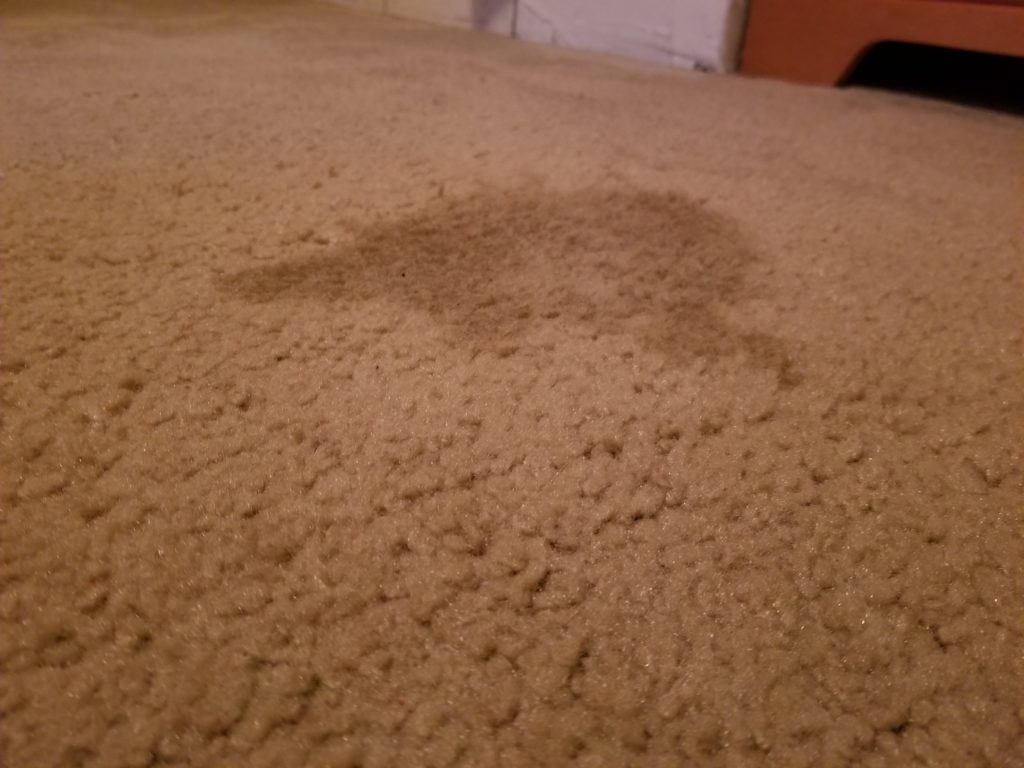
Getting Rid of Cat Urine Odors
Getting rid of the combination of concentrated ammonia and hormones present in cat urine is challenging. Most normal cleaning products are not powerful enough to fully remove the cat urine odor. After cleaning, your cat, who has a much better smell that you, will still be able to smell his hormones if the site has not been cleaned thoroughly enough or with the right materials. And you’d better believe he’s going to mark it again if he can still smell himself.
You should avoid using any cleaning products that contain ammonia when trying to clean up cat urine. Since the urea in the urine has broken down into ammonia, using an ammonia-based cleaning product is not going to solve your ammonia problem. It will make things worse.
Also, avoid using cleaning products that contain bleach. When bleach and ammonia mix, they release chloramine gas. Chloramine gas is toxic. You should immediately vacate an area where these two chemicals have been mixed and ventilate it to allow the gas to dissipate.
Homemade Cleaning Solutions
White Vinegar & Water

Create a solution of white vinegar and water, using one part vinegar for every one part water (50/50 solution). This solution can be rubbed into the cat urine stain using a scrub brush or cloth. Vinegar naturally reacts with ammonia, and using a vinegar cleaning solution will help to neutralize the painful ammonia smell associated with cat urine.
The smell of vinegar may remain at the location or on the fabric temporarily after cleaning. It will fade shortly, and the cat urine odor should also be gone by the time the vinegar smell has disappeared.
Apple Cider Vinegar & Water

If the smell of white vinegar is a bit too much for you, you can substitute apple cider vinegar instead.
Apple cider vinegar and white vinegar are produced using the same process and work almost identically to one another as a cleaning agent. Apple cider vinegar tends to be a bit more expensive since it is often sold for consumption in addition to its use as a cleaning agent.
Adding apple cider vinegar to your laundry can help neutralize cat urine odors and remove stains from clothing without add too much of an astringent vinegar smell.
Club Soda and Baking Soda

At least, according to the folks at Arm & Hammer.
Try scrubbing stained carpets and other linens with club soda and allowing it to dry. Then, dust the stain with baking soda and lightly scrub it into the area. Allow the baking soda to react with any of the remaining odors, then vacuum it up.
Baking Soda and Hydrogen Peroxide + Dish Soap
After cleaning a stain with vinegar but before it has fully dried, sprinkle baking soda across the stain. Combine ¼ cup of hydrogen peroxide with 1 tsp. of liquid dish soap and apply to the stain. Scrub the mixture into the stained area, then blot dry.
Make sure you test this stain remedy on a small portion of the carpet before applying it across the entire stain. This will help you make sure that the mixture is not going to cause any discoloration.
Commercial Cleaning Aids
There are a number of enzymatic cleaners on the market that can be used to break down the proteins and other molecules contained in cat urine. Enzymatic cleaners can cause staining or discoloration on some fabrics, so always test the cleaner in a small area before applying it across the entire stain.
Here are some of the most popular enzymatic cleaners on the market:
Material-Specific Cleaning Instructions
Carpet
Try to blot up as much of the urine as possible if the stain is still wet. Use a clean cloth and cold water. Do not rub the urine into the carpet, but instead use a blotting motion. Avoid applying heat to the stain.
Next, apply your cleaning solution of choice to the stain. Work the solution into the stain with a scrub brush. The solution should not just sit on top of the carpet. You need to make sure that it is pushed deep into the carpet so it can contact as much cat urine as possible.
Let your cleaning solution soak into the stain for at least 10 minutes. Scrub the stain using a scrub brush, then blot the stain dry using a clean cloth. Try to remove as much cleaning solution as possible through absorption. This will allow the cleaned stain to dry faster.
Avoid using bleach or other harsh cleansers that may discolor the affected area.
Make sure you remember to vacuum the stain area after it has dried. This will remove any remaining dry particles of cat urine or cleaning solution that may still be in the carpet.
You may need to repeat this process a few times to fully remove the cat urine smell. In the event that the urine soaked all the way through your carpet and into the materials below, you may have a difficult time ever getting the space clean. Consider putting something on top of the spot if convenient, like a piece of furniture, to keep your cat away from it.
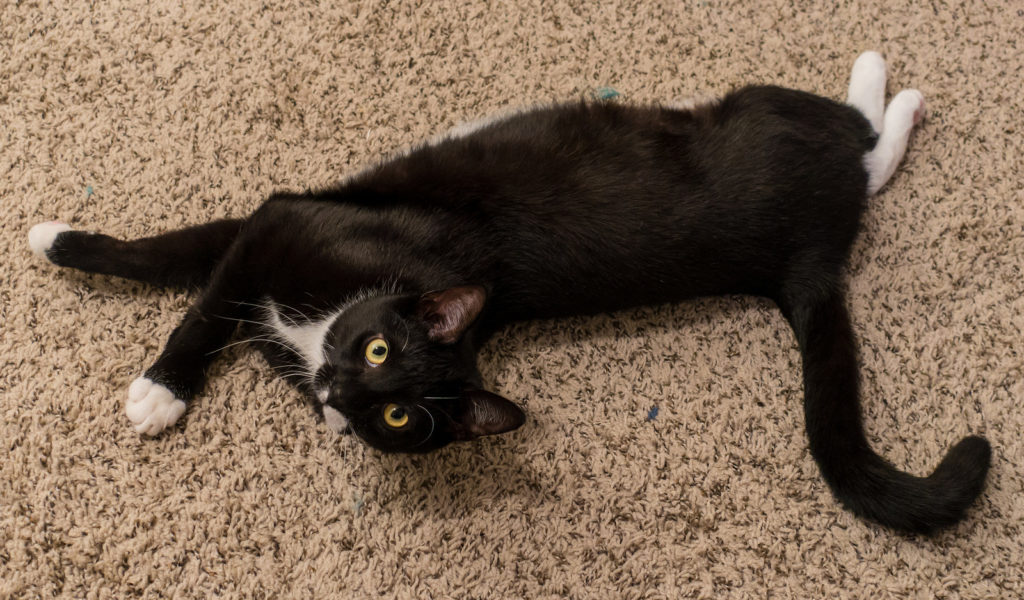
Clothing, Towels, and Linens (Machine Washable)
Rinse the stained area with cold water. Place the stained items in the washing machine and add your normal laundry detergent. Next, add 1 cup of baking soda and ¼ cup of vinegar (apple cider or white) to the washing machine. Run the machine. You may need to repeat the process a few times to fully remove the odor. If baking soda and vinegar aren’t cutting it, consider trying an enzymatic cleaner.
Do not put your clothes in the dryer after you’ve cleaned the stains out of them. The heat from the dryer can permanently trap any remaining odor in the fabric. Allow your clothes to air dry, then check to see if you can still smell the cat urine. Repeat as necessary.
Couches, Chairs, Pillows, Mattresses, etc.
Just like cleaning a carpet, blot up as much of the liquid as you using a clean cloth. Using a cloth dampened with cold water, wet the stained area. Then repeat the blotting process.
Next, apply your cleaning solution across the entire stain. Gently scrub the cleaning solution into the stain using a soft scrub brush. Allow the solution to soak into the stain for at least 10 minutes.
After allowing the stain to soak, use a scrub brush to scrub the stain. Then, blot up the remaining cleaning solution using a clean cloth. Once the area has been dried, you will need to keep the area covered with a cloth until the cleaning process has been repeated enough times to permanently remove the cat urine odor. Make sure to replace the towels regularly, and repeat the cleaning process as many times as needed to get rid of the smell.
Hard Surfaces
Hard surfaces may be cleaned using stronger cleaning products than carpets, upholstery, mattresses, or clothing. Make sure the cleaning solution you use does not contain ammonia or bleach.
Depending on the type of surface, you may not be able to use an acidic cleaner. Fortunately, cat urine smells are easier to remove from hard surfaces than from fabrics. Make sure to clean the spot several time until the odor is no longer detectable.
Tips for Avoiding Future Accidents
- Keep the litter box clean
- If your cat urinates somewhere, you may need to repeat the cleaning procedures above several times before your cat loses interest in urinating there again.
- Place your cat’s food near the location where he previously urinated. Cats are less likely to go to the bathroom in the same place that they eat.
If your cat continues having accidents outside of the litter box, bring him to your vet immediately for an evaluation. Several medical conditions may cause an adult cat to stop using his litter box. For example, when older cats develop arthritis, they may avoid the litter box because it is painful to enter and exit. The sooner you get your cat checked out, the sooner the problem can be diagnosed accurately.

